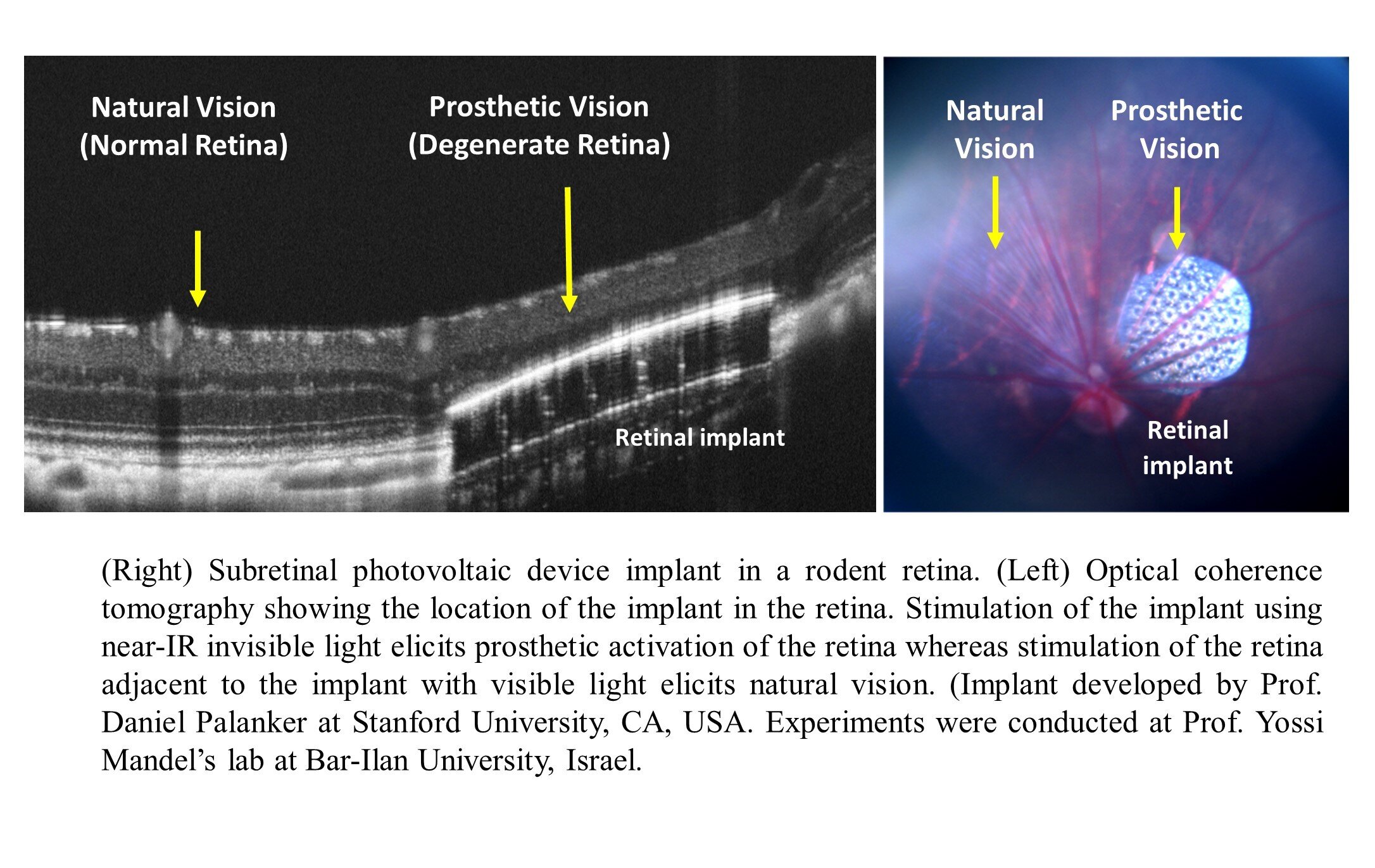
Macular degeneration (AMD) causes blindness in millions of people in the Western world. It is the most common cause of severe vision loss among those aged 50 and over, and its prevalence increases with age. Though there is no cure for AMD, recent advances in artificial retina implants may lead to effective treatment.
When there is damage to the photoreceptor layers in the retina, doctors may implant an artificial retina—a device built from tiny electrodes smaller in width than a hair. Activating these electrodes results in electrical stimulation of the remaining retinal cells and results in visual restoration, albeit partial. AMD patients implanted with an artificial retina possess a combination of artificial central vision and normal peripheral vision. This combination of artificial and natural vision is important to study in order to understand how to help the blind. One of the critical questions in this regard is whether the brain can integrate artificial and natural vision properly.
In a new study published in the journal Current Biology, researchers from Bar-Ilan University and Stanford University report for the first time evidence indicating that the brain integrates natural and artificial vision while maintaining processing information that is important for vision. “We used a unique projection system which stimulated either natural vision, artificial vision or a combination of natural and artificial vision, while simultaneously recording the cortical responses in rodents implanted with a subretinal implant,” said Tamar Arens-Arad, who conducted the experiments as part of her doctoral studies. The implant is composed of dozens of tiny solar cells and electrodes developed by Prof. Daniel Palanker at Stanford University.
“These pioneering results have implications for better restoration of sight in AMD patients implanted with retinal prosthetic devices and support our hypothesis that prosthetic and natural vision can be integrated in the brain. The results could also have implications for future brain-machine interface applications where artificial and natural processes co-exist,” said Prof. Yossi Mandel, Head of Bar-Ilan University’s Ophthalmic Science and Engineering Lab and the study’s lead author.
Provided by Bar-Ilan University


